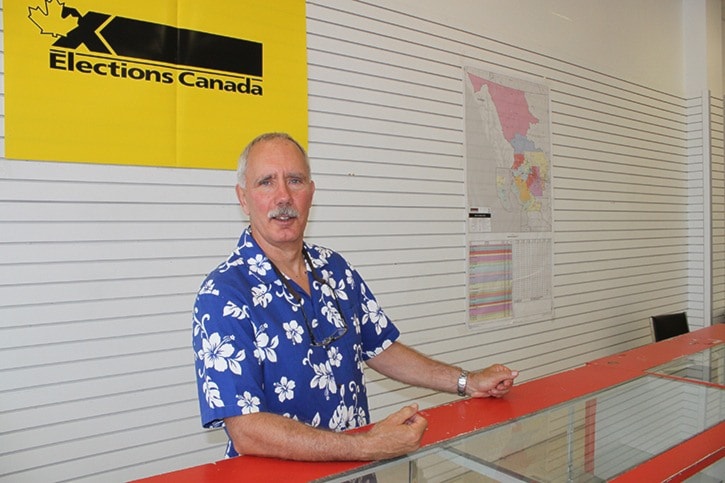The man who is at the helm of the Skeena-Bulkley Valley riding for the 2015 federal election says Canada is lucky to have a stable democracy.
Former Terrace educator and school principal Warren Wilson says that compared with places he and his wife visited on their year-long honeymoon in 1976, we’ve got it good here.
After seeing inaccessible polling stations watched over by teenagers bearing submachine guns in Iraq and Afghanistan, he says he returned with a desire to one day engage in the much better electoral system we have here.
This plan has materialized as Wilson takes on his role as non-partisan Election Canada’s returning officer in the region, overseeing the election process.
The Skeena - Bulkley Valley riding is the fourth largest of the 338 in the country. That number increased from 308 in the last Parliament because of a redistribution in areas where the population has grown.
By way of comparison, Wilson says a typical riding in Toronto might be six square kilometres while the Skeena - Bulkley Valley riding is 628,000 square kilometres.
The central office he and his team work out of is located beside Shoppers Drug Mart in the old Source storefront in Terrace.
There are four other sub-offices in Kitimat, Smithers, Burns Lake and Prince Rupert.
The Terrace office will employ 18 people and there are seven employees in each of the other offices.
Those other offices each have an assistant returning officer, the most out of any riding in Canada, Wilson says.
At the peak leading up to and including election day Oct. 19 there will be 650 workers in the area including poll clerks and deputy returning officers, with hiring ongoing for some of those positions this week.
There are 60,000 eligible voters in the riding, which encompasses the whole north coast and inland as far as Fort St. James (not including Vanderhoof).
It’s the job of
Wilson and the electoral team to make sure that voter information cards get sent out so the voters list can be updated.
Wilson says that people can even come into one of the five central offices any time before the Oct. 19 election to vote.
Information is available online or by calling or stopping at the offices.
With changes brought in by the Conservative government’s Fair Elections Act, there are new rules about ID and also for vouching for a person who may not be on the voters list.
No longer can one voter confirm the identity of another who doesn’t have ID.
Every voter needs one valid government-issued ID with a photo.
If they don’t have that, they need two pieces of ID which don’t necessarily need photos but which must be on a list of approved IDs.
If you are visiting from somewhere other than where your address is, you can vote in that riding.
But it should be no later than six days before the election day so your ballot can be mailed to Elections Canada and then recorded in your home riding’s tally.
To vote early in case of absence, there are advanced polling days.
In addition to administering the voters list and managing the voting on election day, one of Wilson’s other jobs is to officially approve of the candidates selected by their respective political parties. Perspective candidates have to file by September 30, 19 days prior to the October 19 election.
